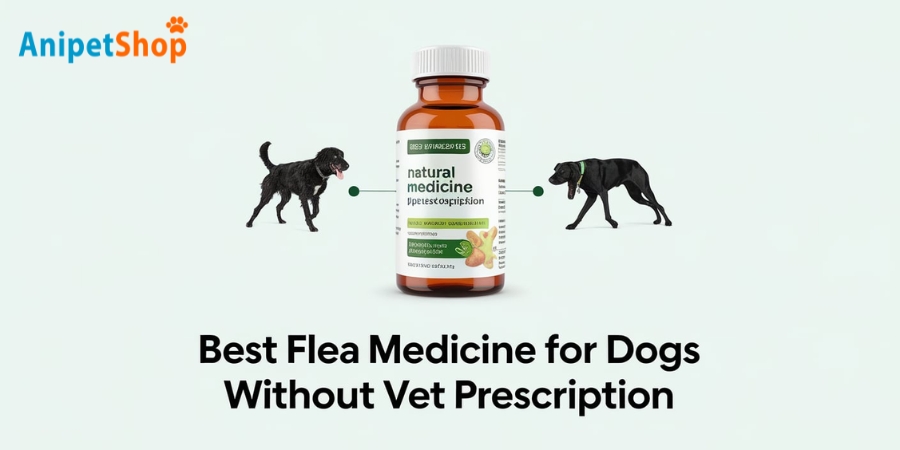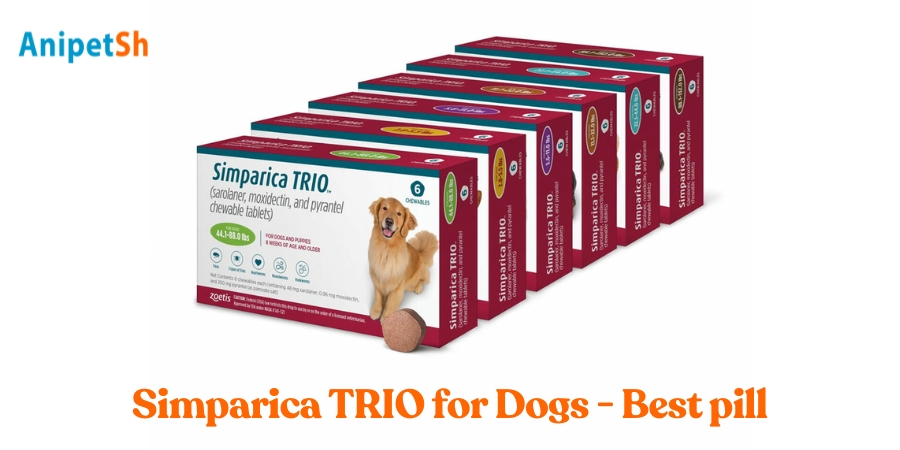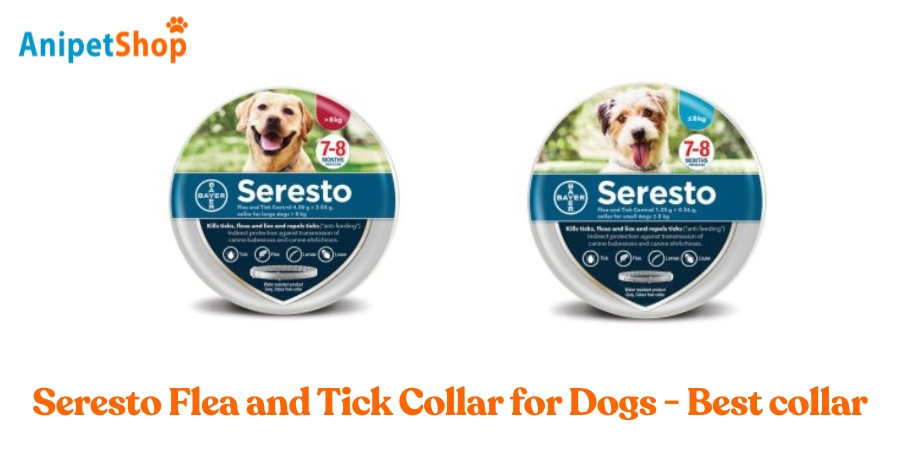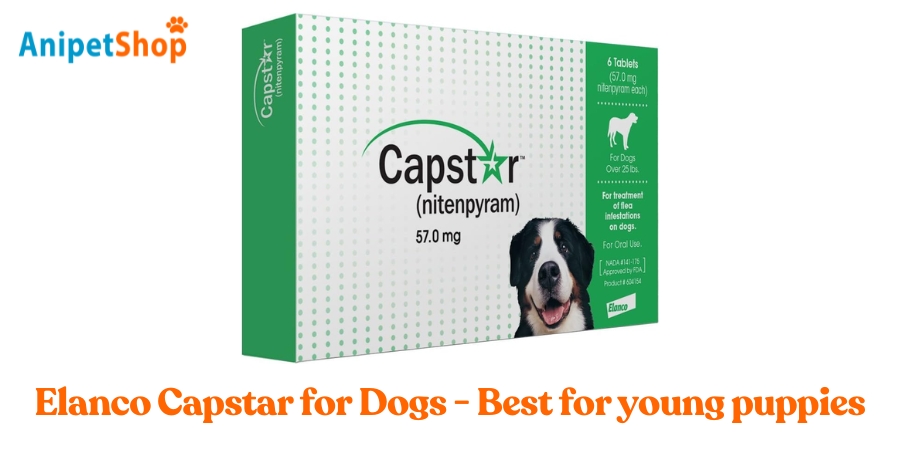Best Flea Medicine for Dogs Without Vet Prescription
Finding an effective flea medicine for dogs without needing a vet prescription can feel overwhelming for pet owners. With many over-the-counter options available, it’s possible to ease your dog’s discomfort from fleas while addressing infestations directly at home. Taking time to explore the best non-prescription flea treatments not only ensures your pet’s safety but can also save you the expense and wait of a veterinary visit.
Today’s over-the-counter flea treatments have become popular due to their effectiveness and accessibility. These products empower pet owners with easy-to-apply solutions that keep their pets comfortable and healthy without a vet appointment. To choose the right product, consider your dog’s individual needs, such as size, age, and any sensitivities, which will guide you toward the safest and most effective option. With the right knowledge, you can confidently navigate the available options and select the best flea medicine to keep your dog protected and thriving.

Understanding Flea Treatments for Dogs
When choosing a flea treatment for your dog, it’s essential to understand the available options, especially when considering treatments without a vet prescription. There are numerous over-the-counter (OTC) options designed to effectively control fleas, while prescription treatments may be needed in more severe cases or for broader parasite protection. Here’s a guide to help you understand and select the most effective flea treatment for your pet.
Non-prescription Flea Treatments: Non-prescription flea treatments are accessible at pet supply stores and online, offering convenience and effectiveness for mild to moderate flea infestations. These treatments come in various forms, including topical applications, collars, and oral tablets. They are generally safe for most dogs when used correctly and can provide fast relief from fleas, often without the need for a vet prescription.
Prescription Flea Treatments: Prescription flea medications are typically more potent, often addressing a wider spectrum of parasites like ticks, mites, and heartworms. They may be required if a non-prescription treatment doesn’t seem to work or if a dog has a persistent infestation that requires a more comprehensive approach. Prescription treatments come with tailored dosing instructions, ensuring they meet the specific needs of each dog’s age, weight, and health profile. If non-prescription treatments aren’t resolving the problem, it’s wise to consult a veterinarian.
Types of Non-prescription Flea Treatments
Non-prescription flea treatments come in several forms, each specifically designed to effectively combat fleas:
- Topical Treatments (Spot-Ons): These treatments are applied directly to the skin, usually on the back of the neck where the dog can’t reach. Spot-ons work by dispersing across the skin’s natural oils, providing continuous protection for weeks. They are a reliable choice for lasting protection and are relatively easy to administer.
- Flea Collars: Flea collars release active ingredients gradually, providing extended protection by killing and repelling fleas. Many collars are effective for several months, making them convenient for dogs that may not tolerate other types of treatments. Flea collars are particularly useful for dogs who spend a lot of time outdoors.
- Oral Medications: Oral flea treatments, available in flavored chewables or tablets, work from the inside out, killing fleas quickly, often within hours of ingestion. Oral treatments are ideal for dogs that swim or are frequently bathed, as they are not affected by water or grooming. Oral medications are usually given monthly, but their frequency may vary based on the product.
Treatment Frequency and Guidelines
Each non-prescription flea treatment type has a different duration and frequency. Most topical applications and oral medications are administered monthly, while certain flea collars can last up to eight months. Carefully follow the manufacturer’s instructions for each product, as correct application and dosing are essential for maximum effectiveness and to prevent fleas from returning.
Choosing the Best Flea Treatment for Your Dog
Selecting the right flea treatment depends on several factors, including your dog’s size, age, lifestyle, and any specific sensitivities. For instance, smaller dogs may require lower doses, and dogs with sensitive skin may need a gentler formulation. Flea collars or oral medications may be a better fit for dogs that dislike the sensation of topical applications.
Understanding these options and how they work enables pet owners to make informed decisions, ensuring their dog’s health and comfort. Proper flea control keeps your pet happier and healthier, while regular use of flea preventatives safeguards them from potential flea-related diseases.
Best 5 Flea Treatments Without Prescription
Advantage Multi for Dogs
Advantage Multi for Dogs provides broad-spectrum protection with a simple monthly application, effectively treating, controlling, and preventing more parasites than most other topical options.
Pros:
- Protects against six types of parasites
- Convenient, once-a-month application
- Simple to apply directly to the skin
Cons:
- Does not provide tick protection
- Not approved for use in puppies under 7 weeks or in breeding, pregnant, or nursing dogs
Details:
- Parasites Targeted: Adult fleas, heartworms, mange mites, roundworms, hookworms, and whipworms
- Effectiveness Duration: 30 days
- Safe For: Dogs over 7 weeks old and weighing more than 3 pounds
Advantage Multi for Dogs is one of the best broad-spectrum topical treatments available, effectively targeting a wide range of parasites, including adult fleas, heartworms, mange mites, and three intestinal worms (roundworms, hookworms, and whipworms). The active ingredients, imidacloprid and moxidectin, work by killing adult fleas before they lay eggs, preventing infestations.
Easy to use, Advantage Multi is applied every 30 days to the skin between the shoulder blades, where it absorbs and dries within hours. Gloves aren’t required for application; simply wash hands with soap and water if contact occurs. To ensure safety, keep dogs from licking the application site for about 30 minutes and avoid children touching it for two hours.

Frontline Plus for Dogs – Best OTC Topical Preventative
Frontline Plus for Dogs is a powerful over-the-counter topical treatment that targets and kills adult fleas, flea eggs, flea larvae, ticks, and chewing lice on contact—without requiring a prescription.
Pros:
- Kills all flea life stages, ticks, and chewing lice for comprehensive monthly protection
- Effective for 30 days and works on contact, so fleas don’t need to bite
- Conveniently available without a prescription
Cons:
- Not suitable for puppies under 8 weeks old
- Does not protect against parasites beyond fleas, ticks, and chewing lice
Details:
- Parasites Targeted: Adult fleas, flea eggs, flea larvae, ticks, and chewing lice
- Effectiveness Duration: 90 days for fleas; 30 days for ticks and chewing lice
- Safe For: Dogs over 8 weeks old and over 5 pounds; safe for pregnant, nursing, and breeding dogs
Frontline Plus for Dogs is a leading choice for flea and tick prevention, offering protection against fleas, ticks, and chewing lice with a simple application. Each dose provides up to three months of flea control and monthly protection against ticks and lice. Trusted by pet owners for over 20 years, Frontline Plus uses fipronil and S-methoprene to kill adult fleas and ticks on contact and prevent the development of flea eggs, larvae, and pupae.
To apply, squeeze the contents of the tube onto your dog’s skin between the shoulder blades. The treatment spreads across the skin and is stored in oil glands, ensuring continuous protection through the hair follicles.

Simparica TRIO for Dogs – Best pill
Simparica TRIO offers broad-spectrum parasite protection with a single, easy-to-administer monthly chewable, covering more parasites than any other oral treatment.
Pros:
- Provides protection against a wide range of parasites
- Convenient, once-a-month dosing
- Can be given alone or with food
Cons:
- Not approved for puppies under 8 weeks or for breeding, pregnant, or nursing dogs
Details:
- Parasites Covered: Adult fleas, flea larvae, five tick species, heartworm, hookworms, roundworms, mange mites, and chewing lice
- Effectiveness Duration: Begins killing adult fleas within 8 hours; provides 30 days of continuous protection
- Safe For: Dogs aged 8 weeks and older, weighing at least 2.8 pounds
Simparica TRIO stands out as the best pill-form flea and tick treatment for dogs, providing fast-acting, broad-spectrum parasite protection. This monthly chewable starts working within four hours and kills 100% of adult fleas within eight hours. With ingredients sarolaner, moxidectin, and pyrantel, Simparica TRIO protects against fleas, ticks, heartworms, and intestinal worms, covering more parasites than any other oral option.
Oral treatments like Simparica TRIO can be especially beneficial for dogs with sensitive skin, as they provide full-body protection without the risk of washing off. The liver-flavored tablet is easy to administer, with or without food, and is safe for puppies as young as eight weeks. However, it does require a prescription and a heartworm test before starting, and should be used with caution in dogs with neurological conditions like seizures.

Seresto Flea and Tick Collar for Dogs – Best collar
Seresto Flea and Tick Collar for Dogs provides up to eight months of continuous protection against fleas and ticks at all life stages.
Pros:
- Long-lasting, eight-month protection
- Lightweight, comfortable, and adjustable for all dog sizes
- Works on contact, so fleas and ticks don’t need to bite
Cons:
- Not suitable for puppies under 7 weeks old
- Children should avoid handling the collar
- Adjusting the collar size can be a bit challenging
Details:
- Parasites Covered: Adult fleas, flea larvae, ticks, and mange mites
- Duration: Up to 8 months of effectiveness
- Safe For: Dogs 8 weeks and older; available in two sizes—small (up to 18 lbs) and large (over 18 lbs)
In March 2021, USA Today reported about 1,700 pet deaths and other adverse reactions potentially linked to Seresto flea collars, though it remains unclear if the EPA-approved pesticides in the collar caused these incidents.
Once the standard in flea control, collars have largely been replaced by topical and oral treatments. However, the Seresto Flea and Tick Collar for Dogs stands out with its sustained-release technology, offering eight months of continuous protection against adult fleas, flea larvae, ticks, chewing lice, and mange mites.
The collar is non-greasy, odor-free, lightweight, and adjustable, making it suitable for dogs of all sizes. It’s also water-resistant, so dogs can swim or bathe without removing it. Using low concentrations of imidacloprid and flumethrin, the Seresto collar kills fleas and ticks on contact within 24 hours. Dr. Kelley Lay, a veterinarian, considers Seresto a good alternative for dogs who can’t tolerate topical or oral preventatives due to its safety and efficacy.

Elanco Capstar for Dogs – Best for young puppies
Capstar for Dogs is an effective, fast-acting flea treatment that can be given to puppies as young as 4 weeks old and begins killing adult fleas within just 30 minutes.
Pros:
- Rapid action against adult fleas within 30 minutes
- Easy to give, either alone or mixed with food
- Can be safely combined with other flea prevention products
- Available without a prescription
Cons:
- Only provides short-term relief, lasting 24 hours
- Does not target flea larvae or eggs
- No protection against other parasites
Details:
- Parasites Targeted: Adult fleas
- Duration: 24 hours
- Safe For: Dogs 4 weeks and older, weighing over 2 pounds, including pregnant, nursing, and breeding dogs.
For a quick solution to heavy flea infestations, especially in young puppies, Capstar for Dogs is an effective choice available without a prescription. It’s the only flea treatment safe for puppies as young as 4 weeks and weighing at least 2 pounds—most other treatments require puppies to be 8 weeks or older.
Capstar’s active ingredient, nitenpyram, begins working within 30 minutes and kills over 90% of adult fleas within four hours. Although it provides only 24 hours of protection, it’s safe for daily use, making it ideal for young puppies until they are old enough for a longer-lasting flea preventative.

How to choose Best Non-Prescription Flea Medicine for Dogs
Selecting the right non-prescription flea medicine for your dog is essential for effective flea management and your pet’s safety. When shopping for flea treatments without a vet prescription, especially at retailers like Walmart, it’s helpful to consider factors such as active ingredients and suitability for your dog’s specific needs, including size and skin sensitivity. Here’s a guide to choosing the best non-prescription flea medicine for your dog.
Evaluating Effectiveness
- Active Ingredients: Look for trusted active ingredients like fipronil, imidacloprid, or selamectin, as these are proven to kill fleas quickly. These ingredients target fleas at various stages of their life cycle, offering comprehensive protection against reinfestation.
- Speed of Action: Different dosage forms vary in how quickly they work. Topical treatments often deliver faster relief, working within hours, while flea collars offer long-lasting protection, though they may take up to a few days to reach full effectiveness. Oral medications can also work rapidly, providing a thorough kill within hours and often requiring monthly dosing.
- EPA Registration: Check for Environmental Protection Agency (EPA) registration on the label. This indicates the product meets safety and effectiveness standards for flea control.
Factors to Consider for Small Dogs and Sensitive Skin
- Size-Specific Formulations: Dogs under 4 pounds may require specially formulated flea medicine with lower doses. Selecting the appropriate dose based on weight is crucial for safety and effectiveness, especially in small dogs.
- Hypoallergenic and Sensitive-Skin Formulas: If your dog has sensitive skin, consider products labeled for sensitive skin or hypoallergenic options. Natural or gentler formulations with soothing ingredients can reduce the risk of skin irritation.
- Additional Safety Warnings: Always read the label for age, weight, and health restrictions, as many treatments specify suitability based on these factors. For delicate pets, consult product labels or online resources for a hypoallergenic or size-specific flea solution.
Selecting Based on Lifestyle and Environmental Needs
- Indoor vs. Outdoor Dogs: Dogs that spend more time outdoors may need stronger or longer-lasting flea treatments, such as a flea collar or durable topical treatment. Indoor-only dogs may benefit from less intensive products.
- Geographic Region: In areas where fleas and ticks are particularly active, a stronger or more comprehensive flea preventative may be needed. Many products also list coverage for other parasites, like ticks, mites, or lice, which can be useful in certain regions.
By evaluating these factors, pet owners can confidently choose a non-prescription flea treatment that fits their dog’s needs. Ensuring the right match of product, application, and sensitivity considerations will help you protect your pet effectively and safely.
Long-Term Flea Control Options for Dogs
Maintaining long-term flea control is essential for a pest-free home and a healthy dog. For those seeking durable solutions, two primary options stand out: yearly flea and tick shots administered by a veterinarian and extended-duration flea treatments available over the counter.
Yearly Flea and Tick Shots
Yearly flea and tick shots offer a hassle-free, long-lasting solution for managing parasites. These injections are typically administered by veterinarians and provide up to 12 months of protection, covering fleas, ticks, and, in some cases, other parasites. The medication is slowly released into your dog’s system over the year, reducing the frequency of treatments and offering peace of mind for owners who prefer minimal dosing.
It’s important to note that while these injections are effective, their impact may vary based on factors such as your dog’s health, age, and the level of flea exposure in your area. Veterinarians recommend regular check-ups to ensure the effectiveness of the shot and to monitor for any potential side effects. If your dog frequently interacts with other animals or is exposed to high-flea environments, a vet may suggest pairing this with an additional form of flea prevention for added coverage.
Extended-Duration Flea Treatments
Extended-duration flea treatments are an excellent alternative for pet owners who prefer to handle flea control at home. These treatments typically last from three to several months, providing flexible, long-term control against fleas.
Types of Extended-Duration Treatments
- Oral Medications: Many of these products, available in flavored chewables or tablets, offer long-term flea control with durations ranging from one to three months per dose. These medications are ideal for dogs that frequently bathe or swim, as the effectiveness of oral treatments won’t be compromised by water. Some well-known options are available over-the-counter, containing active ingredients that target fleas at multiple life stages, preventing infestations from recurring.
- Topical Treatments: Topicals with extended protection are another convenient choice, typically applied between the shoulder blades. These treatments work through the dog’s skin and natural oils to repel and kill fleas and ticks, and many products offer three months of coverage per application. Owners should follow the application instructions carefully, as effectiveness can vary if not applied correctly.
Extended-duration treatments are effective at preventing fleas during peak seasons but still require regular monitoring to ensure lasting protection. While these treatments are generally safe, always adhere to the dosage recommendations for your dog’s weight and health profile. Regularly inspect your pet and home environment for signs of fleas, especially during summer months or if you live in a high-risk area.
By choosing an appropriate long-term flea control method, dog owners can keep fleas at bay, reduce the frequency of treatments, and enjoy a healthier, itch-free pet all year round.
Optimal Application Techniques
Applying flea treatment properly is crucial, especially for dogs with sensitive skin. Following correct application techniques and safety guidelines will ensure the treatment is both effective and gentle on your pet. Here’s a guide to optimal methods and precautions to achieve the best results.
Optimal Application Techniques
- Follow Manufacturer’s Instructions: Each flea product has specific instructions, including dosage and application methods. Carefully read the label and instructions to ensure the product is applied correctly. Proper application enhances effectiveness and reduces the risk of irritation, which is especially important for sensitive dogs.
- Applying Shampoo: If using a flea shampoo, allow the shampoo to sit on your dog’s coat for the recommended time (usually 5–10 minutes) before rinsing. This allows the active ingredients to work on the fleas. Avoid the dog’s face, eyes, and mouth, and focus on areas where fleas are commonly found, like the back and belly.
- Topical Spot-Ons: For spot-on treatments, start by parting the fur to expose the skin. Apply the treatment directly on the skin between the shoulder blades or along the back, depending on the product’s instructions. Always avoid the eyes, nose, and mouth. Ensure your dog is completely dry before application, as water can dilute the product and reduce its effectiveness.
- Timing and Scheduling: Consistent application is key to keeping fleas at bay. Set reminders for monthly applications or follow the product’s specific schedule for optimal protection. For dogs with sensitive skin, use a regular yet gentle schedule that minimizes overuse.
- Combining Treatments: Some owners find that using a flea shampoo in conjunction with a topical treatment provides extra protection. However, it’s essential to ensure both products are compatible and that you’re not applying too frequently, as this may cause skin irritation. Always consult a vet before combining products, especially for dogs with sensitive skin.
- Weight-Based Dosage: Flea treatments are typically dosed according to weight. Be sure to weigh your dog and select a product designed for their weight class to avoid under- or over-application, which can lead to ineffective treatment or adverse reactions.
Safety and Precautions
- Monitor Your Dog’s Health: Ensure your dog is in good health before applying flea treatments. If your dog is pregnant, nursing, or has underlying health conditions, consult a veterinarian before use.
- Patch Testing: Before fully applying a new flea treatment, conduct a patch test on a small area to check for any adverse reactions, especially if your dog has a history of allergies or sensitive skin. If there is any sign of redness, itching, or discomfort, discontinue use and consult your vet for alternatives.
- Child and Pet Safety: After application, keep treated dogs away from children and other pets until the treatment has dried. This prevents accidental ingestion or contact with the treatment, which could be harmful.
- Avoiding Sensitive Areas: Be cautious not to apply flea treatment near the dog’s eyes, mouth, or genitals, as these areas are highly sensitive and can react to even mild treatments.
- Contacting a Professional if Needed: If you encounter issues with persistent infestations or if your dog has adverse reactions, seek veterinary guidance immediately. Additionally, for flea problems extending beyond pets, such as in your home or yard, consider contacting pest control professionals for assistance.
By following these best practices, you can safely and effectively protect your dog from fleas, even if they have sensitive skin. Regular application and attention to your dog’s unique needs will keep them comfortable, healthy, and flea-free.
Keep flea medicine out of reach of children, and avoid letting your dog access areas like beds or couches until the treatment has dried completely. If any complications or reactions occur, contact your veterinarian promptly for guidance.
FAQs
Can I get flea and tck medicine without a vet prescription?
Yes, you can purchase flea and tick medicine without a vet prescription. At Anipet Shop, we offer a wide range of non-prescription flea and tick treatments designed to keep your pet protected and comfortable. Our selection includes trusted options like topical spot-on treatments, flea collars, and oral medications that are effective in combating fleas, ticks, and other common parasites.
Visit Anipet Shop’s flea and tick prevention section to explore the products we offer and find the best solution for your pet’s needs. We provide high-quality, authentic products from reputable manufacturers, ensuring that your pet gets the safe, effective treatment they deserve—all without the need for a prescription. If you have any questions, our customer support team is ready to help guide you in selecting the most suitable flea and tick treatment for your furry friend.
What is the difference between prescription and non-prescription flea medicine?
Flea control products come in both non-prescription and prescription options. Prescription flea treatments often cost more but provide broader protection, covering additional parasites like heartworms. Non-prescription options, however, are widely available and can effectively treat fleas and other common parasites. Both types offer long-lasting protection, so the best choice depends on your pet’s specific needs.
What is the safest flea and tick medicine for dogs?
Flea and tick medicines are FDA-approved for safety and effectiveness but come with specific safety guidelines. These may vary based on the dog’s age, weight, pregnancy or nursing status, and any history of neurological issues, such as seizures. Always review the product label carefully to ensure it’s safe for your dog’s health and unique needs.
Do flea collars work?
Yes, flea collars are effective, though they may be less potent than topical or oral treatments. The Seresto Flea and Tick Collar provides up to eight months of protection against adult fleas, flea larvae, ticks, and mange mites. Flea collars can be a good option for dogs that may have sensitivities to topical or oral flea products.
How can I tell if my dog has fleas?
Fleas can be tricky to see directly, but there are telltale signs that may indicate an infestation. To answer the question, “How can I tell if my dog has fleas?“, look for behaviors like excessive scratching, biting, or licking, along with signs of red or irritated skin. Another key indicator is flea dirt—tiny, dark flecks that resemble ground pepper—which can often be found on your dog’s fur or bedding. To check for flea dirt, run a flea comb against the grain of your dog’s fur, focusing on areas such as the tail base, back, and groin. Additional signs to watch for include pale gums, which can be a symptom of anemia due to flea bites, and patches of hair loss. Recognizing these signs can help you confirm if fleas are affecting your dog.
Lily Watson is an author specializing in veterinary care in Australia. With a profound passion for animal welfare and a solid foundation in veterinary science, Lily has dedicated herself to disseminating valuable knowledge and information for both pet owners and professionals in this field.

